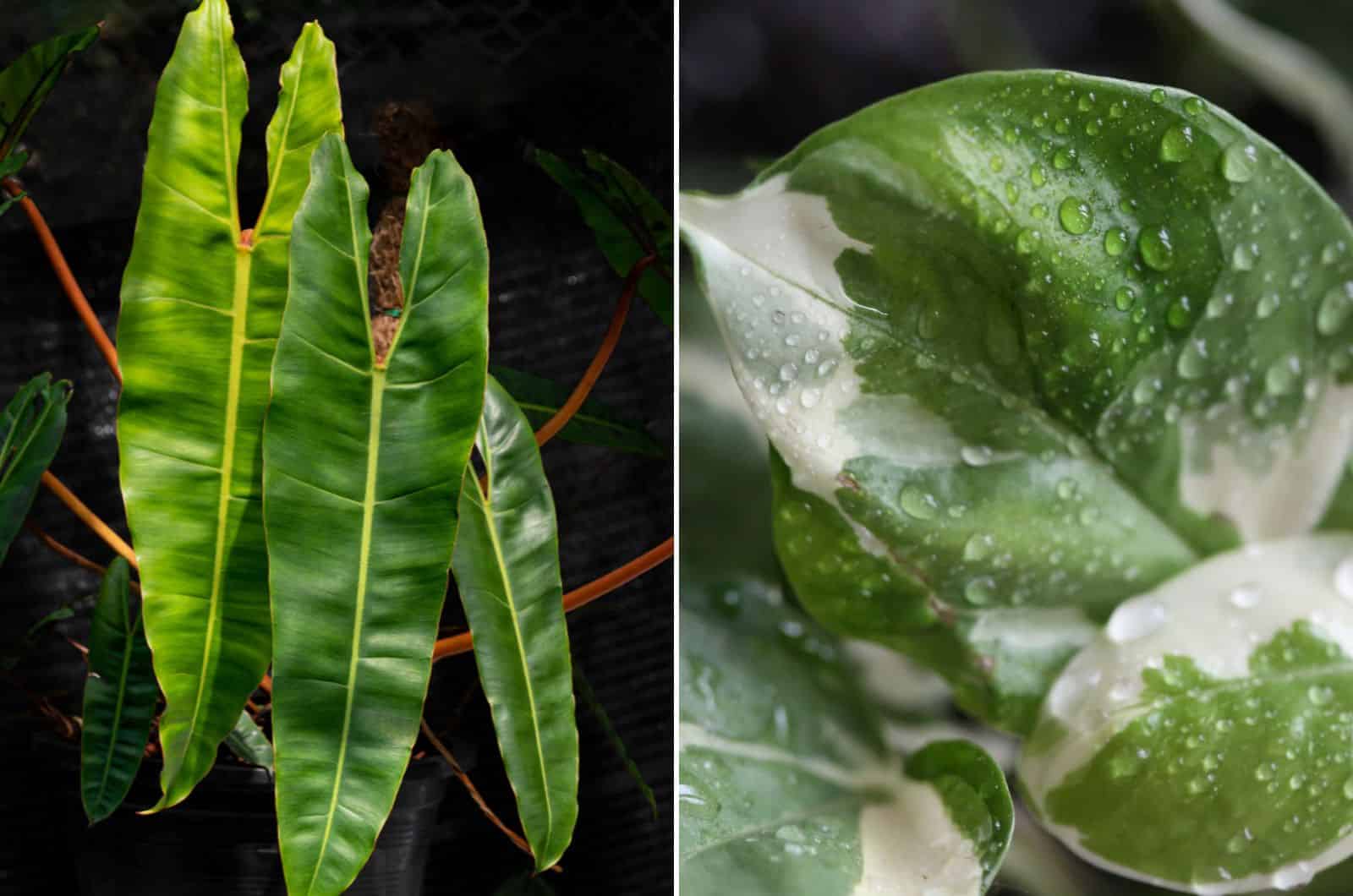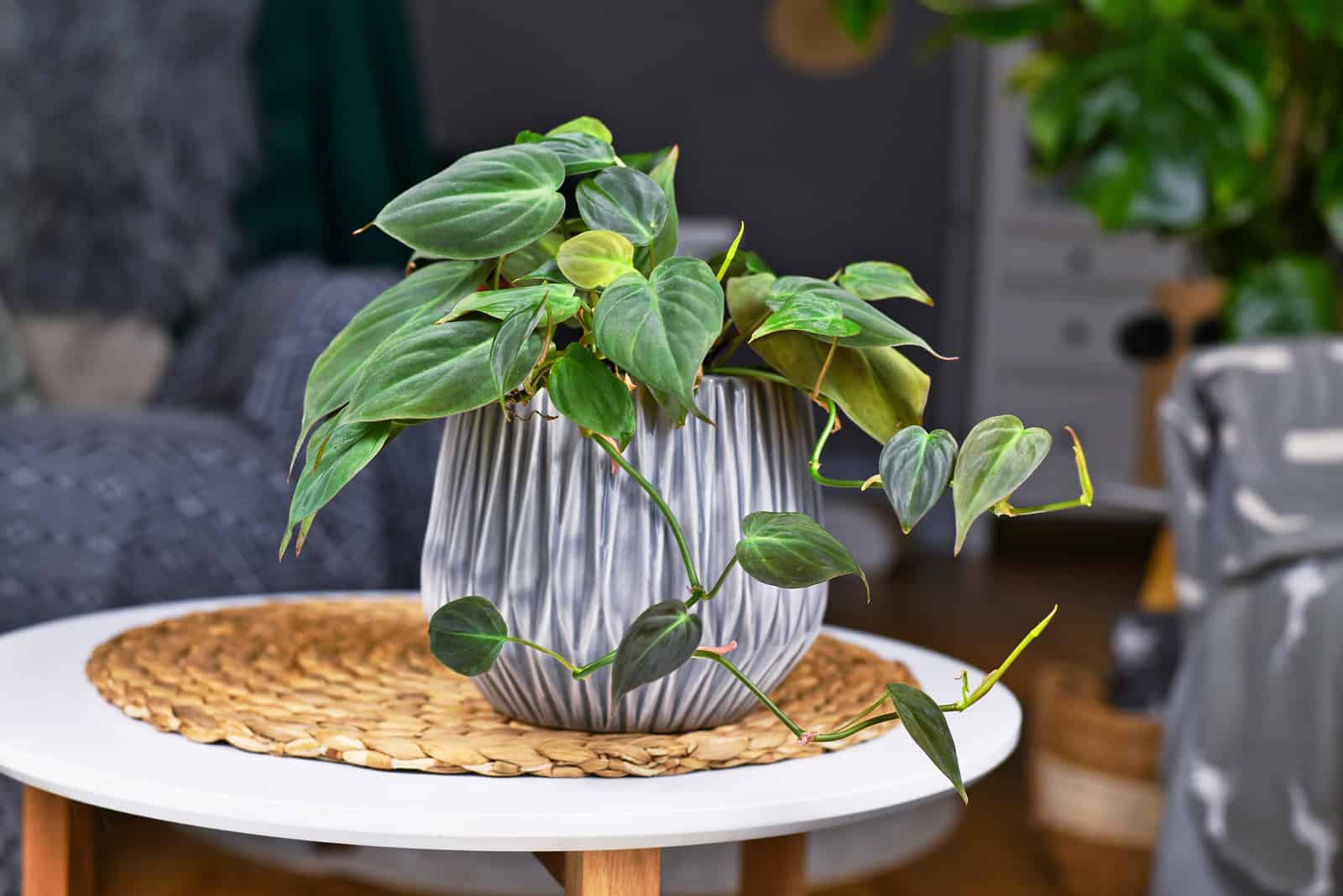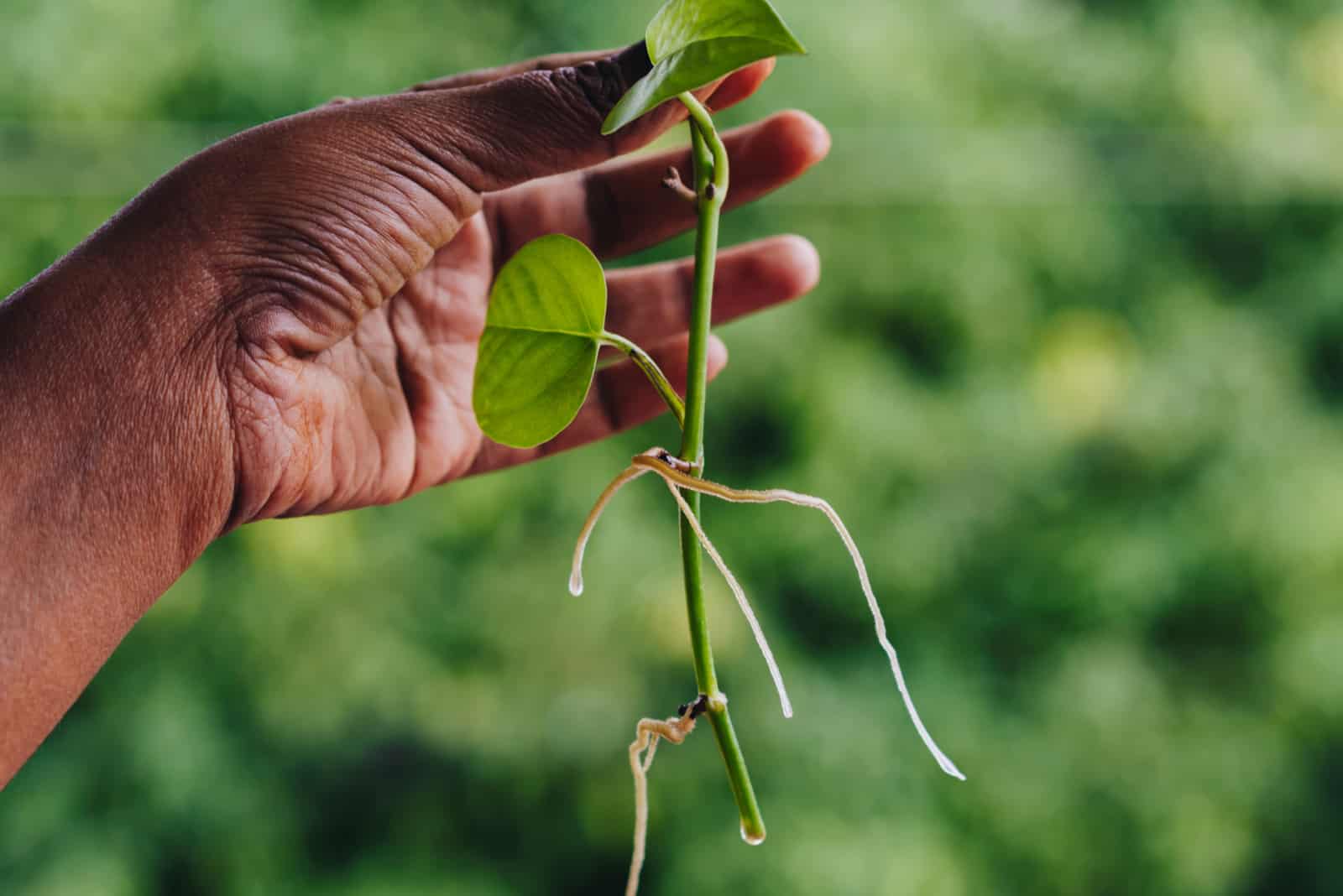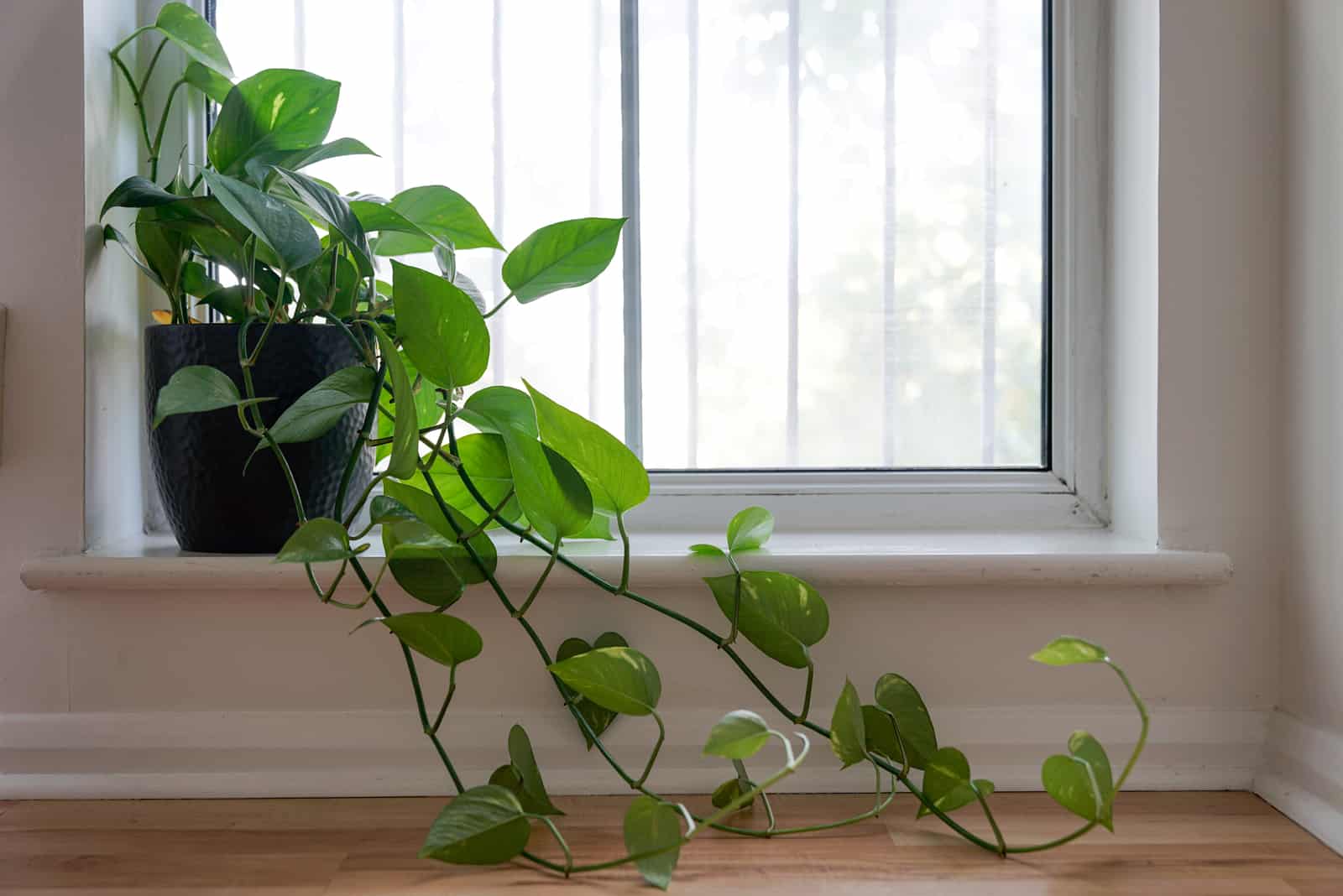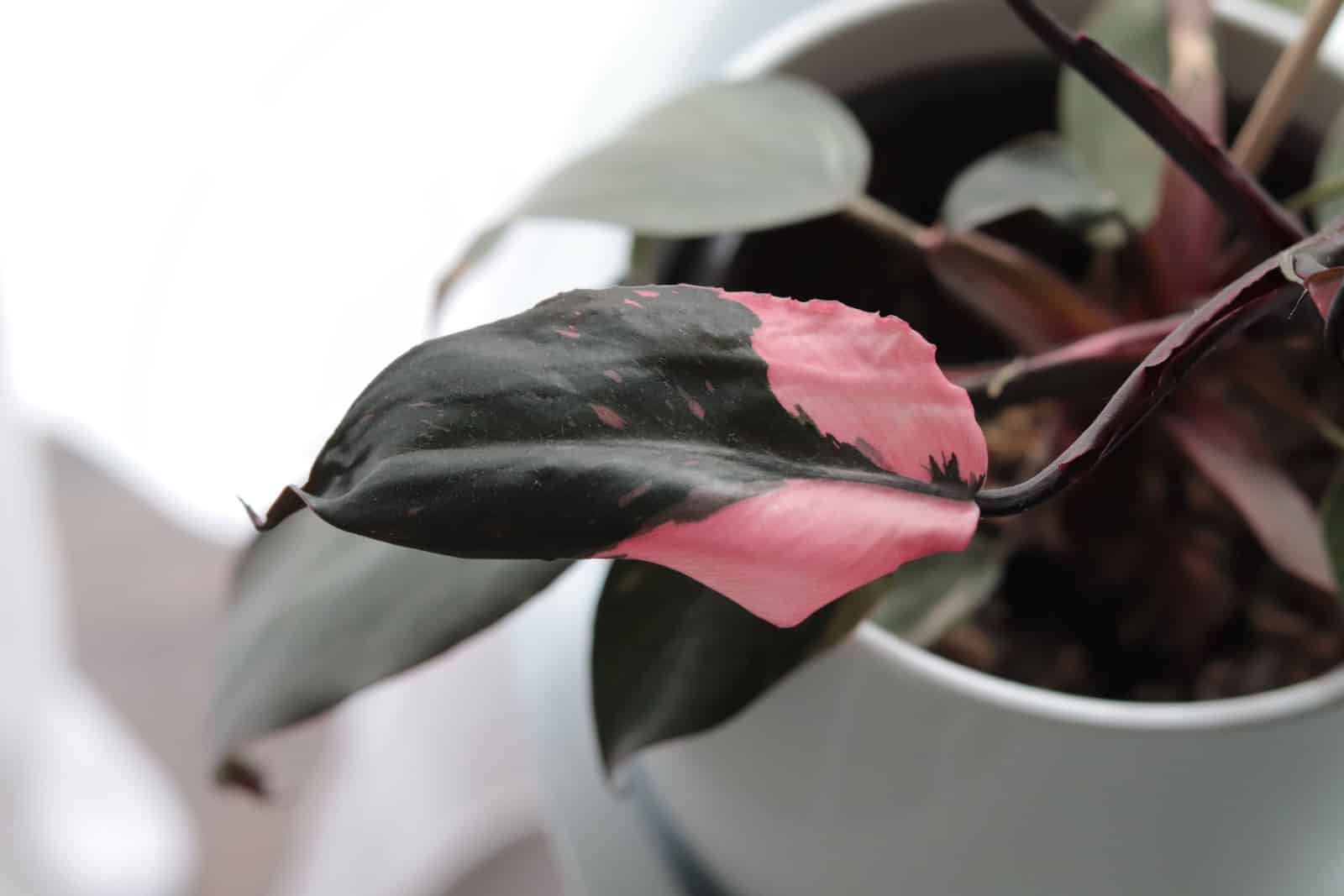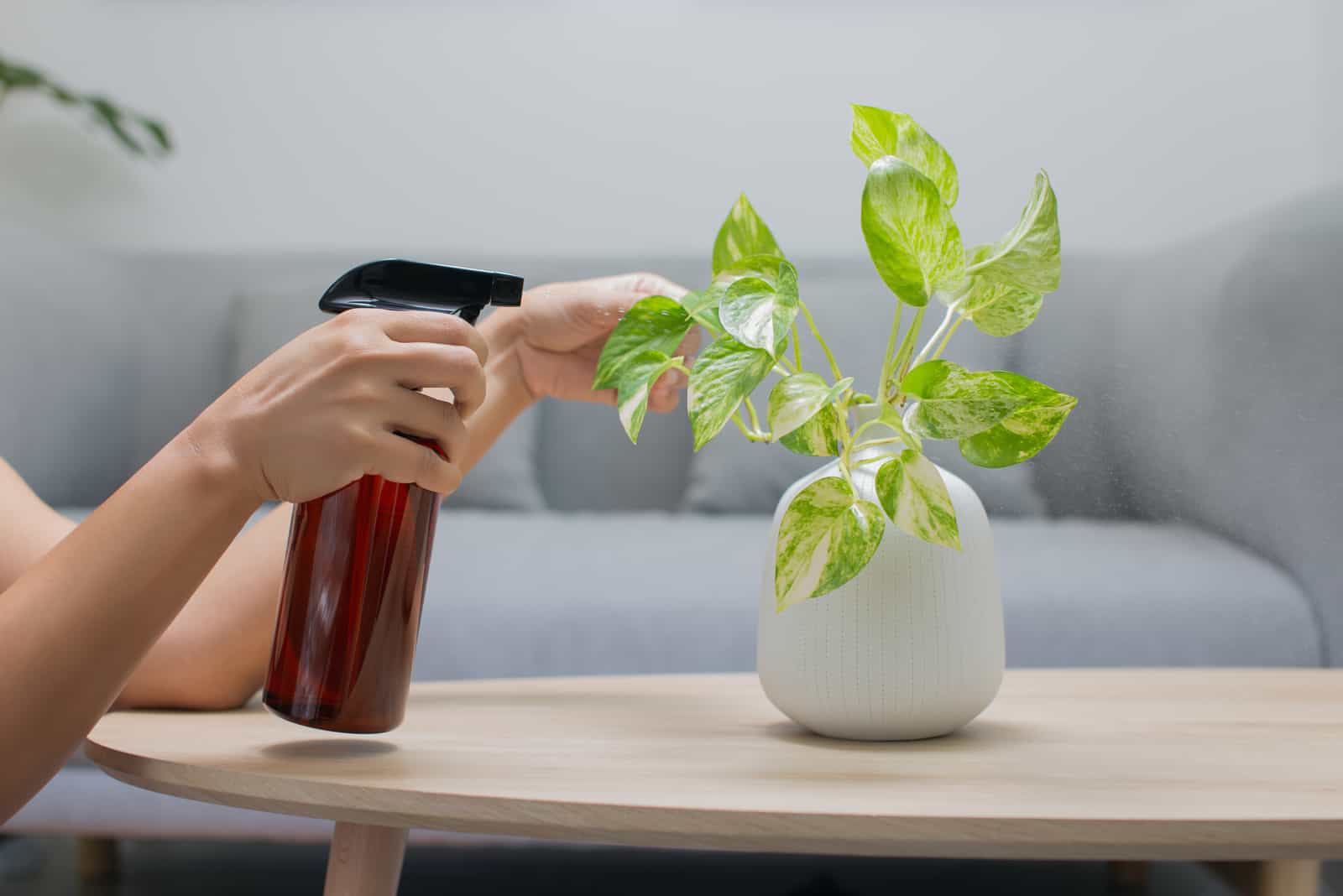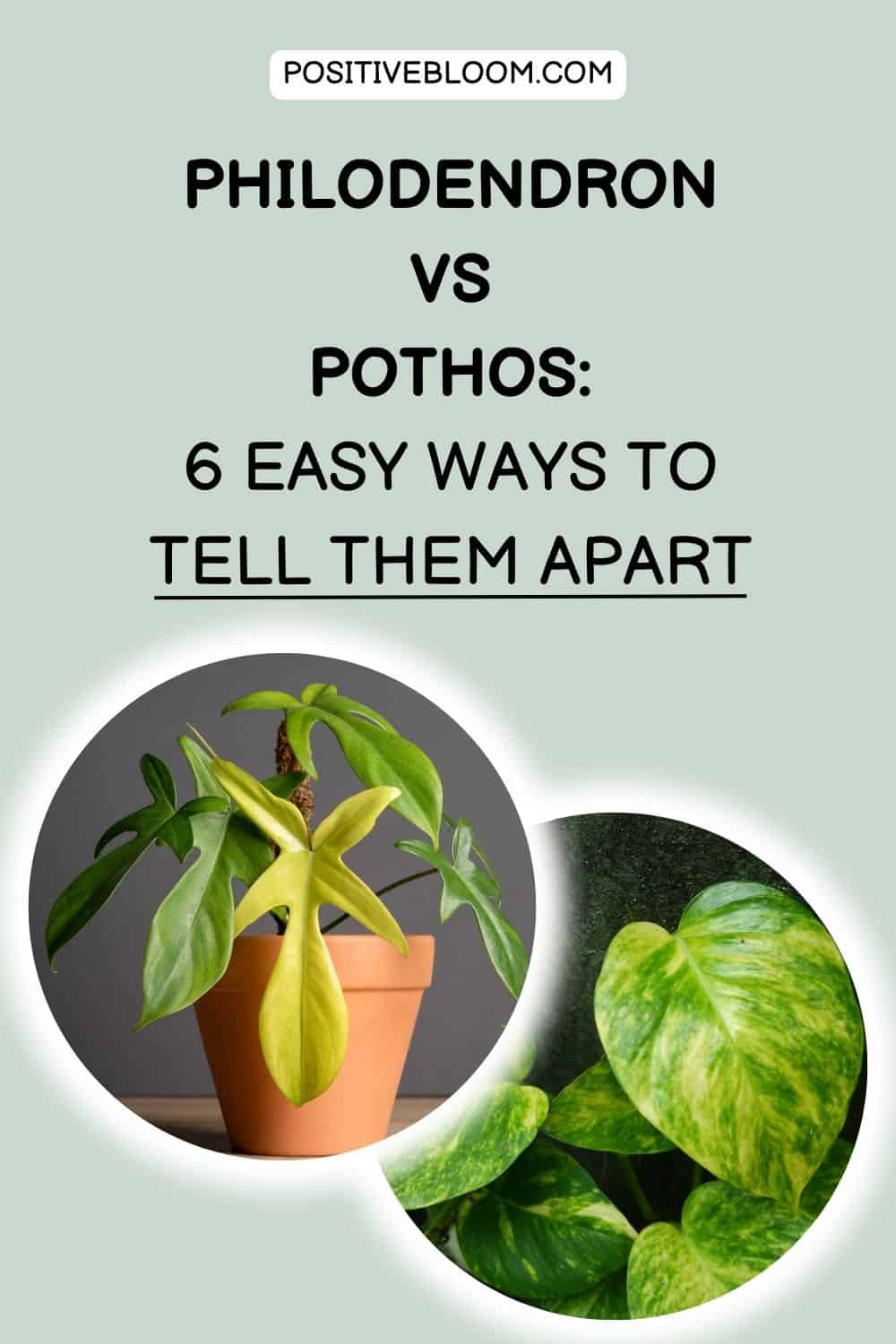Philodendrons and pothos are grown worldwide as houseplants. These plants are easy to maintain and look very attractive.
Additionally, both plants have many cultivars you can choose from depending on your preferred shape, color, or size.
But many growers struggle to differentiate between philodendron vs pothos. The essential thing to understand is that these two are completely different plant species, and therefore have distinctive features.
I’ll show you 6 key differences between these plants so you never confuse them again.
Let’s get started!
Philodendron vs Pothos: Key Differences
Are pothos and philodendron the same plants? NO. So, what actually makes them different?
The key differences between pothos vs philodendron are in taxonomy, leaf shape and texture, growth habit and new growth, aerial roots, petioles, and care requirements.
Here’s a table with an overview of the differences:
[table id=517 /]
Let’s get started!
1. Taxonomy
The first difference we’ll start with is taxonomy. Pothos and philodendron belong to the same kingdom (Plantae), order (Alismatales), and family (Araceae).
The similarities in taxonomy end with plant family. The next classification is the genus, and these plants belong to different genera, indicating separate species.
According to science, the Philodendron genus encompasses 489 species and is one of the largest genera in the world.
Pothos are part of the Epipremnum genus, and many pothos plants are widely cultivated, so new hybrids are being created all the time.
The most common species in the Epipremnum genus is Devil’s ivy. As for philodendrons, the Heartleaf philodendron is the most prevalent one.
2. Leaf Shape And Texture
Philodendron hederaceum (botanical name) got the nickname Heartleaf philodendron because of its leaf shape.
The heart-shaped leaves of the hederaceum philodendron plant are actually the trademark of this species and the main reason it’s so popular.
The leaves of pothos plants are thicker and have a waxier texture compared to philodendron leaves.
The difference in the shape and texture of the leaves is clearly visible in Heartleaf philo and Golden pothos (Devil’s ivy).
The leaves of the philodendron species are sharply curved inwards at the base and look like the apex of a heart. In contrast, the pothos leaf has a flat base.
Philodendron plant leaves also have a soft texture to the touch.
3. Growth Habit And New Growth
The next thing that can help us distinguish between these two species are the cataphylls. Philodendron leaves develop from cataphylls, which are actually a tiny modified leaf that surrounds and shields the new leaf as it develops.
You’ll notice this feature if you grow the trailing species of philodendron plants. The tiny leaves typically stay on the plant after unfolding. After some time, these leaves become papery and fall off.
In contrast, Epipremnum plants don’t have this feature. Their leaves will develop and unfold from the current leaf as opposed to developing from cataphylls.
4. Aerial Roots
Another significant difference between philodendron and pothos plants is the development of aerial roots.
The aerial roots of pothos and philodendrons actually help them climb on the structural support. These root types are robust in both species, but one thing differs – the number of aerial roots.
Philodendrons develop multiple aerial roots on a single node, grow in an uncontrolled way, and are very small.
Pothos, on the other hand, develop a single, huge aerial root on a node. They resemble thick nubs and have a darker tint compared to the aerial roots of philodendrons.
5. Petioles
The next thing that can help you determine if you have a philodendron or pothos is the petioles.
Let’s first discuss the meaning of petioles. The term refers to the little stems that act as a joint between the leaves and the main stem.
Philodendrons and Epipremnum plants have different growth tendencies, resulting in different petioles.
Philodendron plants are characterized by spherical petioles, in contrast to those of Epipremnum plants. Pothos petioles are recessed toward the stem they are attached to.
Another difference between the petioles is that philodendron petioles are more slender compared to those of pothos.
6. Care Requirements
If we consider the care requirements of Devil’s ivy and the Heartleaf philodendron, we notice a slight difference.
I have to mention that both species are super easy to maintain. When it comes to light requirements, both species grow well in lower light conditions.
But philodendron plants will grow better in low light and probably won’t show any changes in appearance.
Pothos may take more time to adapt, but they’ll grow just fine after some time.
It’s essential to note that all plants from the Epipremnum and Philodendron genera thrive in indirect light.
I also noticed that pothos grow better in slightly higher temperatures than philodendrons.
Both species prefer moist soil, but philodendrons are less drought-tolerant, which means you’ll need to water them more often.
The most common propagation method used for both species is stem cuttings. Some philodendrons may develop offsets you can utilize to get new plants.
The Most Common Varieties
Now that you know the difference between philodendron vs pothos, you should also learn the most common varieties of both species that are commonly grown as houseplants.
Why is that important? Well, Pink princess philodendrons are popular houseplants due to their color, and you won’t find any pothos with this tint.
So, if someone tells you they have a pink pothos, they most likely own a Pink princess philodendron.
Some rare types of philodendrons, such as the Philodendron warscewiczii, don’t resemble pothos in any way.
The most common types of pothos are Epipremnum aureum and its cultivars, Marble queen pothos and Jade pothos.
The Golden pothos and Tricolor pothos are variegated pothos plants.
The most common philodendron variety with variegation is the Philodendron Billietiae.
FAQs
Which is better, philodendron or pothos?
Well, both plants have some remarkable features, and the choice mainly depends on you. For example, if you want a plant that tolerates low-light conditions better, philodendrons should be your choice.
Pothos is a better option if you’re choosing according to drought tolerance, but you need to know that this feature has one teeny tiny drawback; pothos plants are more prone to overwatering.
If you are looking for a more dramatic plant, philodendrons are the perfect choice. New foliage from dark green Philodendron varieties will emerge in reddish or orange overtones. The same goes for the Philodendron stems.
The color of new pothos leaves doesn’t completely change, albeit they could be a little bit lighter than the old ones.
Pro houseplant care tips: Keep these species in indirect light, prune them to encourage growth, and make sure the soil is well-draining.
Is Scindapsus a pothos?
At first glance, some Scindapsus species and Pothos look very similar, but they are completely different species. The confusion occurred due to the common name of Scindapsus pictus, the Satin pothos.
Scindapsus and pothos are aroid plants, which means they come from the Araceae family. But Scindapsus and Epipremnum are actually genera and, therefore, separate species.
Both are low-maintenance plants that differ in variegation color and leaf texture. The silvery gray leaf of Satin pothos makes it unique and distinct.
Most varieties of Epipremnum have streaks that are yellow, light green, or white. The leaves of Satin pothos are also significantly thicker and have a rougher texture than those of true pothos.
Wrapping Up
You’ll find both philodendrons and pothos in many households all around the world. Contrary to popular belief, these are not actually the same plants.
Now you’ve seen the difference between philodendron vs pothos, I’m sure you won’t have any issues distinguishing them.
Pay attention to where you put philodendrons and pothos in your home, as both species are toxic to humans and pets!
Until next time!
Like this post? Share or pin it for later!

